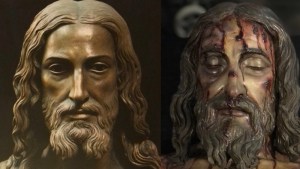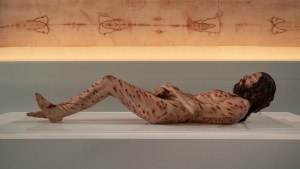For the second time in 2024, research into the age and origins of the Shroud of Turin – a burial shroud with the imprint of a crucified man, which many believe belonged to Jesus Christ – has made headlines, suggesting that the shroud is from the time of Christ.
In April, Aleteia reported on a round of testing of the Shroud of Turin that indicated that its origins were in the Levant region of the Middle East. Study author William Meacham demonstrated this through an analysis of the flax used to make the fabric, placed against other similar samples from many different time periods and regions. At the time, Meacham did note, however, that the 1988 analysis that used Carbon-14 dating to place it from the 14th century would need to be proved false.
The new research – published in the journal Heritage in 2022, but only just starting to gain attention – suggests that the 1988 analysis was, in fact, flawed. The study employed a method called Wide-Angle X-ray Scattering (WAXS), to inspect the shroud’s structural degradation. Working with a thread taken from the same spot as the 1988 study, it was placed beside a sample of linen that is known to have come from the 55–74 AD Siege of Masada (Israel). The sample from the shroud was found to be “fully compatible with the analogous measurements” of the Masada sample.
Team leader Liberato De Caro of Italy’s Institute of Crystallography argued that the 1988 study was flawed, suggesting that the sample was not properly cleaned before it was tested. The X-ray analysis shows that the shroud is much older than the 1988 study proposed. Furthermore, they suggested that the 1988 study disqualifies itself, as the shroud bears too much degradation to have only been around a few hundred years.
If the 1988 study, which placed the shroud at the 14th century, was correct, then the deterioration of the shroud would suggest that it was stored in a room for more than six centuries at a “temperature very close to the maximum values registered on the earth.” The Heritage study, however, determined that the cloth was stored in a more temperate atmosphere with an average temperature of 20.0–22.5 °C and humidity between 75–55%, for around 1,300 years.





